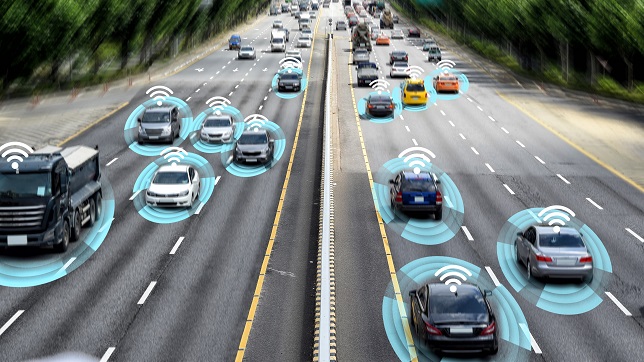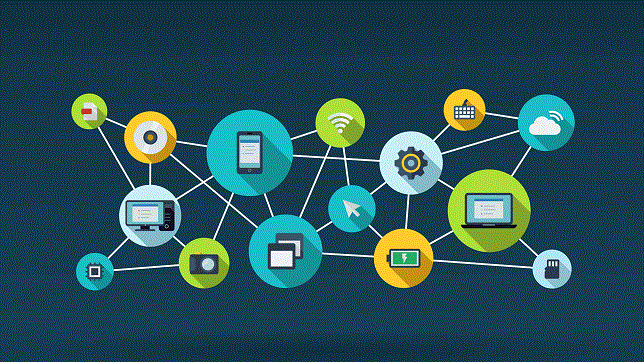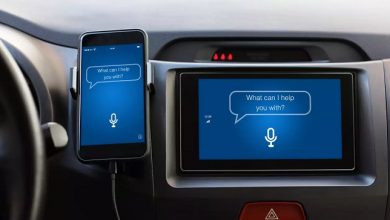A Glimpse of unending horizon of connected vehicle

Background
Ever wondered how many motor vehicles exists on this planet? According to industry trade journal WardsAuto, the number of vehicles in operation worldwide surpassed 1 billion units in 2010. This figure reflects the approximate number of light cars, medium and heavy-duty trucks and buses registered worldwide but does not include off road, heavy duty vehicles.
Vehicles in operation in 2010 equated roughly to a ratio of 1:6.75 vehicles to people among a world population of 6.9 billion but the distribution was not equal, even among the biggest markets.
In the U.S., the ratio was 1:1.3 among a population of almost 310 million – the highest vehicle-to-person ratio in the world. Italy was second with 1:1.45. France, Japan, and the U.K. followed, all of which fell in the 1:1.7 range.
In China, the ratio was 1:17.2 among the country’s more than 1.3 billion people. India, the world’s second most-populous nation with 1.17 billion people, saw a ratio of 1:56.3.
The world vehicle population in 2010 passed the 1 billion units mark 24 years after reaching 500 million in 1986. Prior to that, the vehicle population doubled roughly every 10 years from 1950 to 1970, when it first reached the 250 million-units threshold. This number is now estimated to have surpassed 1.4 billion and it continues to grow at an astonishing rate. If the growth rate continues, we can expect to see around 2.8 billion vehicles on the planet by 2035.
With such rise in demand for transportation, the world requires a more intelligent form of urban transportation than what we have seen in the past. While on one side, governments continue to build infrastructure for supporting mass transportation systems, people continue to invest in private transportation modes on the other side.
The growth in number of vehicles also presents its own set of challenges. Let’s look at the some of the key challenges.
The first and foremost is safety of the driver, passengers, and pedestrians. According to statistics from WHO, approximately, 1.35 million die each year as a result of road traffic crashes. Between 20 and 50 million more suffer non-fatal injuries, with many incurring disability due to their injury. The second challenge is vehicle efficiency. Today’s automobiles are largely based on non-renewable fuels and it is important to ensure that these vehicles are highly efficient. Even with electric vehicles, efficiency will be key. In 2019, Americans used about 142 billion gallons (537 billion litres) of motor gasoline and light duty vehicles account for about 92% of all gasoline consumption in the united states. The third challenge is maintenance of the vehicles and total cost of ownership. In the US, while the average cost of owning a car ranges from $6354 annually for a small sedan to $10,054 annually for a pickup truck, the expected cost of routine maintenance may surprise you. According to a study by AAA, a new car’s routine maintenance and repairs could cost an average of $1,186 each year.
Connected vehicles offers means to address these various challenges.
Benefits of connected vehicles
Driver and Passenger safety is one of the primary benefits of a connected vehicle. The vehicle can warn the driver of hazardous conditions both inside and outside the car and also formulate an automated response to such conditions. For example, it can monitor external weather conditions or hazardous road conditions and alert the drivers in time. It can avert collisions by monitoring the speed and proximity of other vehicles around it. It can monitor the alertness of the drivers and warn them of any fatigue. It can create a comfortable driving condition for the drivers inside the car based on their individual preferences.
In terms of efficiency, connected vehicles can enable drivers to reach their destinations in a cost-efficient manner. Wherever smart infrastructure exists, it can communicate with the outside world such as traffic lights and automatically regulate the speed of the vehicle. It can also automatically stop and start the car based on when the light turns red or green. It can enable the vehicle to communicate with smart parking system and enable the driver to quickly identify an available parking slot. Such features not only save time but also leads to greater fuel efficiency.
A connected vehicle also enables monitoring of the vehicle condition on a regular basis by the manufacturer and can alert the driver of any major repair or maintenance work that needs to be carried out. With advanced diagnostics, the system in the car can supply data to both the manufacturer and the owner and help predict any potential issues before it actually takes place. With efficient fleet management solutions, it is easy to track vehicle records and decide which vehicle has travelled the most and accordingly offer service with the help of connectivity solutions.
Technology building block for connected vehicles
Connected vehicles refer (https://faculty.tru.ca/nlu/cvsac.pdf) to the wireless connectivity enabled vehicles that can communicate with their internal and external environments, i.e., supporting the interactions of vehicle-to sensor on-board (V2S), vehicle-to-vehicle (V2V), vehicle-to-road infrastructure (V2R), and vehicle-to-Internet (V2I). These interactions, establishing a multiple levels of data pipeline to in-vehicle information systems, enhance the situational awareness of vehicles and provide motorist/ passengers with an information-rich travel environment. Further, connected vehicles are considered as the building blocks of the emerging Internet of Vehicles (IoV), a dynamic mobile communication system that features gathering, sharing, processing, computing, and secure release of information and enables the evolution to next generation intelligent transportation systems (ITSs). The development and deployment of fully connected vehicles requires a combination of various off-the-shelf and emerging technologies, and great uncertainty remains as to the feasibility of each technology.
With increasing intelligence, modern vehicles are equipped with more and more sensors, such as sensors for detecting road conditions and driver’s fatigue, sensors for monitoring tire pressure and water temperature in the cooling system, and advanced sensors for autonomous control. The number of sensors is forecasted to reach as many as 200 per vehicle by 2020. Such a big quantity of sensing elements are required to report event-driven or time-driven messages to the electrical control units (ECU) and receive feedback if necessary. Wired solutions such as controller area network (CAN) protocol, FlexRay, and TTEthernet, require cable connections between ECU and sensors. In addition to wired solutions, intra-vehicle wireless sensor networks are feasible too which offers room for optimization especially around weight of the vehicle.
It is widely believed that the advances of inter-vehicle communications will reshape the future of road transportation systems, where inter-connected vehicles are no longer information isolated islands. By means of inter-vehicle communications or V2V communications, information generated by the vehicle borne computer, control system, on-board sensors, or passengers can be effectively disseminated among vehicles in proximity, or to vehicles multiple hops away in a vehicular ad hoc network. Without the assistance of any built infrastructure, a variety of active road safety applications (e.g., collision detection, lane changing warning, and cooperative merging) and infotainment applications (e.g., interactive gaming, and file and other valuable information sharing) are enabled by inter-vehicle wireless links.
Internet connectivity is becoming a must-have feature of modern vehicles. Wireless access technologies play a vital role in delivering the Internet services to vehicle users. Cellular and WiFi are two promising candidates. The cellular networks, such as 3G and 4G-LTE, can provide reliable and ubiquitous access services. The feasibility of using low-cost roadside WiFi access point (AP) for outdoor Internet access at vehicular mobility has also been demonstrated too. Once 5G becomes ubiquitous, a lot more use cases can be enabled.
Market opportunity for connected vehicles
According to market reports, the global connected car market size alone in the pre-COVID-19 situation was projected to reach USD 180.9 billion by 2025, from USD 63.2 billion in 2020. A decline in production since 2018 and the COVID-19 pandemic have had a severe impact on the entire automotive industry. This has resulted in disruptions in the supply of automotive components due to lockdowns imposed by governments. This scenario is expected to affect the connected car market, as the growth of this market is directly related to the production of vehicles. The global connected car market size post-COVID-19 was expected to be USD 53.9 billion in 2020 and is projected to reach USD 166.0 billion by 2025, at a CAGR of 25.2% from 2020 to 2025. However, a steady recovery post-2020 in vehicle production will support the growth of this market in the coming years. An increase in efforts by governments for developing intelligent transportation system, increasing demand for smartphone features in the car, and automated driving technologies along with passenger safety features will boost the connected car market.
In summary, in addition to the tremendous safety potential of connected vehicles, they also promise to increase transportation options, reduce travel time, and reduce cost of vehicle ownership. With the advanced communications data available, traffic managers will be able to control the flow of traffic more easily and prevent or lessen developing congestion. This could have a significant impact on the environment by helping to cut fuel consumption and reduce emissions. Overall, connected vehicles holds a lot of promise for the future in terms of safety, convenience, and cost optimization.
Author:

Thilak Ramanna
Country Head- India, South Asia & ANZ
The Qt Company
Thilak Ramanna is currently the Country Head at The Qt Company for South Asia, Australia and New Zealand regions responsible for managing business and engineering operations. He is passionate about building and scaling businesses for revenue growth and profitability and his areas of expertise includes product development, sales and marketing particularly in high tech such as Internet of Things and Safety applications. Thilak has been a frequent speaker and column writer on topics associated with Internet of Things and Embedded Systems for various journals. He has two international publications in the area of machine learning to his credit. He holds a master’s degree in software systems from BITS, Pilani, India and is also voluntarily involved with the Manufacturing Working Group panel at IET IoT India.
Published in Telematics Wire





